
Tel Aviv: Jewish Architects in Prague 1900-1938
On Saturday, December 4th, the exhibition was opened at Bauhaus Center Tel Aviv in the presence of the Ambassador of the Czech Republic to Israel, Tomáš Pojar:
The exhibition is open until January 15, 2011
Prague has been one of the leading European metropolises since the late 19th century. It has preserved a compact historical core with many monuments of medieval, Renaissance, and Baroque architecture, but alongside these treasures, a number of new buildings of high architectural quality emerged in the styles of historicism, art nouveau, and modernism, and just before World War I, even somewhat extravagant architectural cubism. After the establishment of the independent Czechoslovak Republic in 1918, various styles followed: art deco, expressionism, modern classicism, as well as avant-garde constructivism and functionalism. At that time, the Czech capital was one of the most modern cities, with numerous magnificent palaces, apartment buildings, schools, hospitals, cultural buildings, bridges, and churches, also emphasizing social housing.
World War II interrupted this promising development, and after 1948, a forced era of Stalinist architecture of the Soviet type followed. During the period of communism (1948-1989), the successful period of the first half of the 20th century was deliberately overlooked. Information about the works of Jewish architects from Prague and beyond, of whom dozens worked in the metropolis, completely disappeared. They were mostly graduates of the German Technical University in Prague or schools in Vienna or Germany. Their main language, however, was German, and thus they were later excommunicated from the Czech avant-garde. They could not defend themselves – most perished during the war in concentration camps, while others emigrated to often very distant countries – the USA, Canada, Australia, Ecuador, Mexico, etc. After the war, some did return, but after the communist coup, they emigrated again. Except for a few exceptions, their legacies have not been preserved, and their work has fallen into oblivion. Yet, on the territory of Prague, they designed dozens of outstanding buildings in various styles, from art nouveau to functionalism.
Ten years ago, we decided to commemorate at least some names and in collaboration with leading Czech photographers: Prof. Pavel Štecha and his students Ester Havlová and Karel Cudlín, we prepared the exhibition and catalog titled A Repayment of Debt. It commemorates about seventy German-speaking architects who worked in Prague. The exhibition surprised visitors – many heard for the first time in their lives the names of the builders of structures they knew very well. Many lived, worked, and went to school in those houses. Suddenly it became clear that dozens of significant personalities operated in the Czech capital, such as Ernst Mühlstein and Victor Fürth, Erwin Katona, Martin Reiner, Leo Mayer, Max Gerstl, Rudolf Wels, the married couple Oscar and Elly Oehler, and many others.
Gradually, it has also been possible to fill in the blanks, and today we know more about the fates of some of these architects, as their relatives and friends from around the world are reaching out. We gradually presented the exhibition A Repayment of Debt in a number of European cities: after Prague, where it was supported by President Václav Havel, it was showcased in Regensburg, Berlin, Vienna, Rotterdam, Stockholm, and other cities, and now we are presenting it also in Tel Aviv – a city that is also a significant center of modern architecture.
This exhibition marked the beginning of a planned long-term collaboration between the Jaroslav Fragner Gallery in Prague, the Bauhaus Center Tel Aviv, and the Goethe Institute Tel Aviv, which should collectively map modern and contemporary architecture in Prague and Tel Aviv.
The exhibition was jointly opened by — Micha Gross, Director, Bauhaus Center Tel Aviv; Georg M. Blochmann, Director, Goethe Institute Tel Aviv; David Stecher, Director, Czech Centre in Tel Aviv
The exhibition was prepared by — Jaroslav Fragner Gallery in Prague in 2010
Organizers — Czech Centre Tel Aviv, Bauhaus Center Tel Aviv, Goethe Institute Tel Aviv, Jaroslav Fragner Gallery
Curator — Zdeněk Lukeš
Photo — Ester Havlová, Pavel Štecha, Karel Cudlín
Graphics — Studio Novák and Balihar
Translation — Robin Cassling
Supported by — Ministry of Culture of the Czech Republic, City of Prague, Czech Centres
Jewish Architects in Prague 1900-1938
The exhibition is open until January 15, 2011
 |
Prague has been one of the leading European metropolises since the late 19th century. It has preserved a compact historical core with many monuments of medieval, Renaissance, and Baroque architecture, but alongside these treasures, a number of new buildings of high architectural quality emerged in the styles of historicism, art nouveau, and modernism, and just before World War I, even somewhat extravagant architectural cubism. After the establishment of the independent Czechoslovak Republic in 1918, various styles followed: art deco, expressionism, modern classicism, as well as avant-garde constructivism and functionalism. At that time, the Czech capital was one of the most modern cities, with numerous magnificent palaces, apartment buildings, schools, hospitals, cultural buildings, bridges, and churches, also emphasizing social housing.
World War II interrupted this promising development, and after 1948, a forced era of Stalinist architecture of the Soviet type followed. During the period of communism (1948-1989), the successful period of the first half of the 20th century was deliberately overlooked. Information about the works of Jewish architects from Prague and beyond, of whom dozens worked in the metropolis, completely disappeared. They were mostly graduates of the German Technical University in Prague or schools in Vienna or Germany. Their main language, however, was German, and thus they were later excommunicated from the Czech avant-garde. They could not defend themselves – most perished during the war in concentration camps, while others emigrated to often very distant countries – the USA, Canada, Australia, Ecuador, Mexico, etc. After the war, some did return, but after the communist coup, they emigrated again. Except for a few exceptions, their legacies have not been preserved, and their work has fallen into oblivion. Yet, on the territory of Prague, they designed dozens of outstanding buildings in various styles, from art nouveau to functionalism.
Ten years ago, we decided to commemorate at least some names and in collaboration with leading Czech photographers: Prof. Pavel Štecha and his students Ester Havlová and Karel Cudlín, we prepared the exhibition and catalog titled A Repayment of Debt. It commemorates about seventy German-speaking architects who worked in Prague. The exhibition surprised visitors – many heard for the first time in their lives the names of the builders of structures they knew very well. Many lived, worked, and went to school in those houses. Suddenly it became clear that dozens of significant personalities operated in the Czech capital, such as Ernst Mühlstein and Victor Fürth, Erwin Katona, Martin Reiner, Leo Mayer, Max Gerstl, Rudolf Wels, the married couple Oscar and Elly Oehler, and many others.
Gradually, it has also been possible to fill in the blanks, and today we know more about the fates of some of these architects, as their relatives and friends from around the world are reaching out. We gradually presented the exhibition A Repayment of Debt in a number of European cities: after Prague, where it was supported by President Václav Havel, it was showcased in Regensburg, Berlin, Vienna, Rotterdam, Stockholm, and other cities, and now we are presenting it also in Tel Aviv – a city that is also a significant center of modern architecture.
Zdeněk Lukeš
This exhibition marked the beginning of a planned long-term collaboration between the Jaroslav Fragner Gallery in Prague, the Bauhaus Center Tel Aviv, and the Goethe Institute Tel Aviv, which should collectively map modern and contemporary architecture in Prague and Tel Aviv.
The exhibition was jointly opened by — Micha Gross, Director, Bauhaus Center Tel Aviv; Georg M. Blochmann, Director, Goethe Institute Tel Aviv; David Stecher, Director, Czech Centre in Tel Aviv
The exhibition was prepared by — Jaroslav Fragner Gallery in Prague in 2010
Organizers — Czech Centre Tel Aviv, Bauhaus Center Tel Aviv, Goethe Institute Tel Aviv, Jaroslav Fragner Gallery
Curator — Zdeněk Lukeš
Photo — Ester Havlová, Pavel Štecha, Karel Cudlín
Graphics — Studio Novák and Balihar
Translation — Robin Cassling
Supported by — Ministry of Culture of the Czech Republic, City of Prague, Czech Centres
The English translation is powered by AI tool. Switch to Czech to view the original text source.
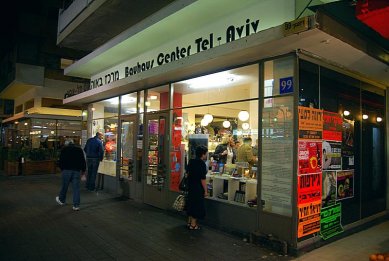
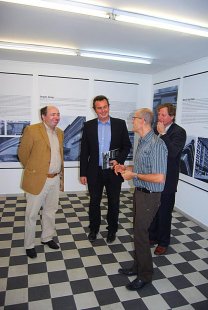
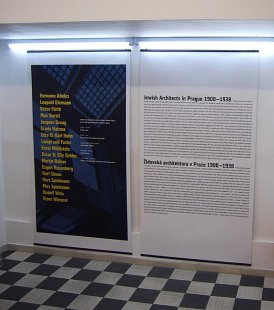
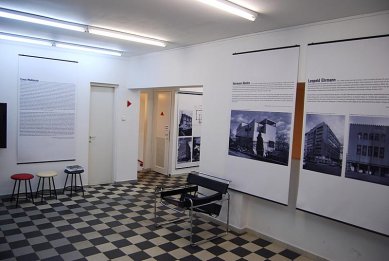
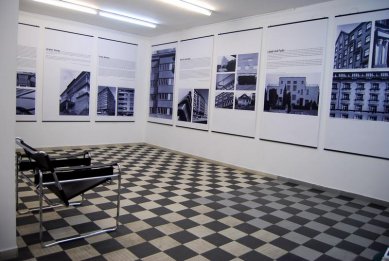
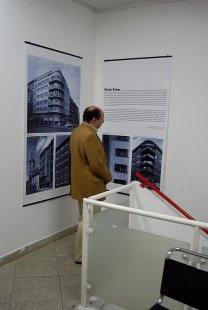
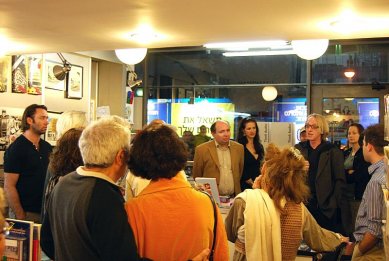
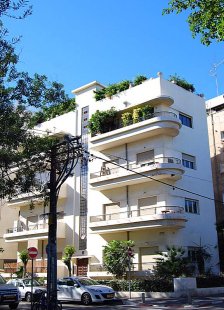
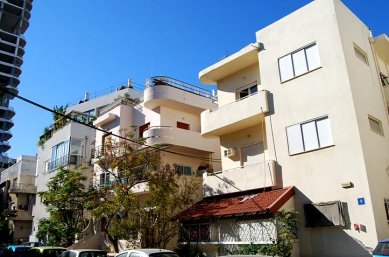
0 comments
add comment










